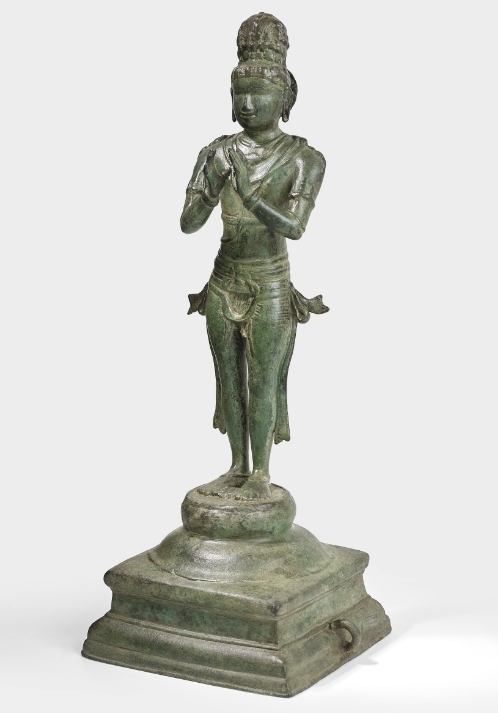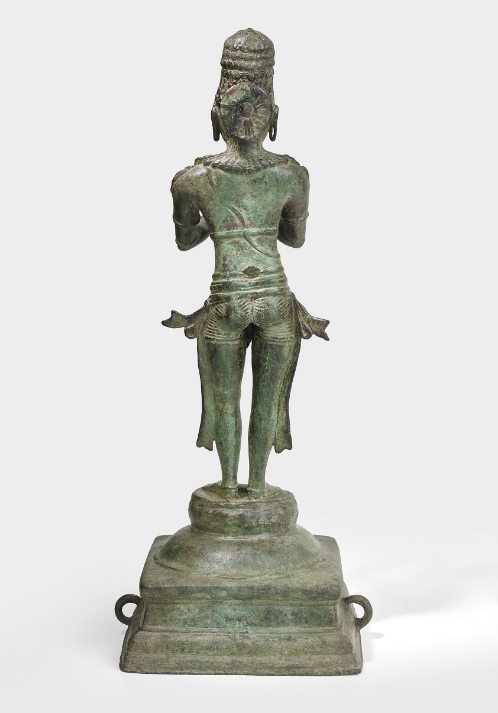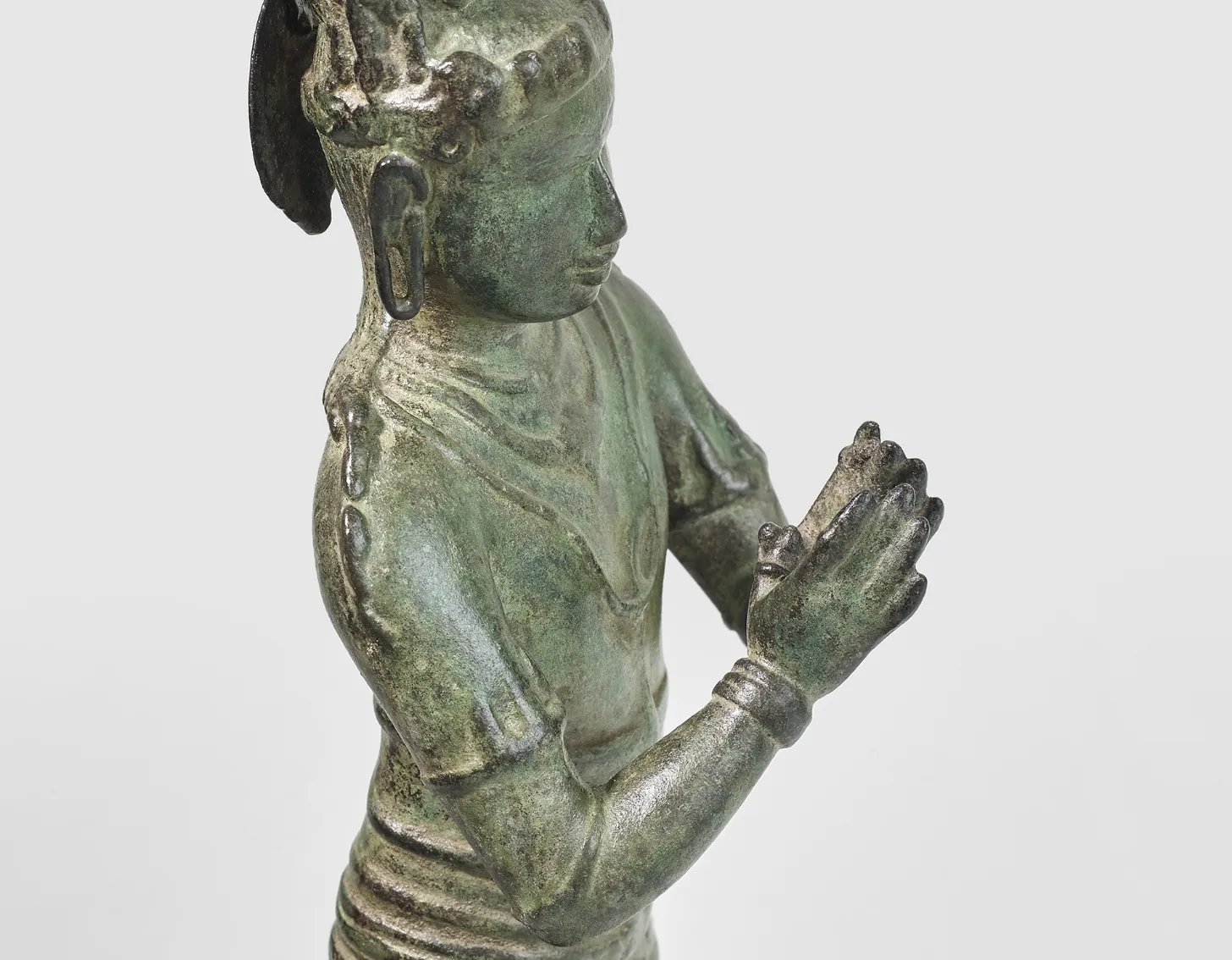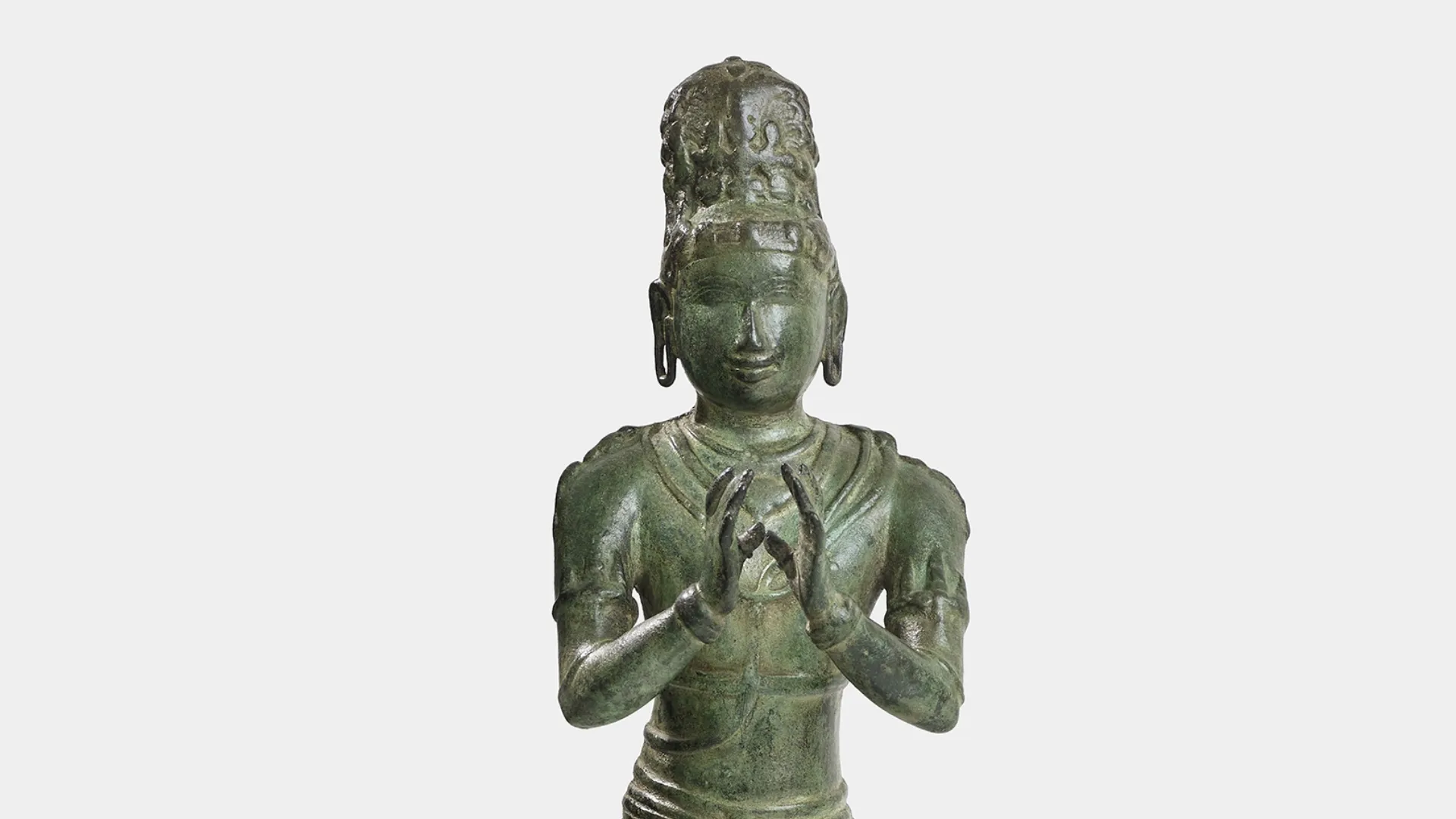South India produced copper alloy sculptures of astonishing quality during the reigns of the Pallavas (c. 600 – 897 CE) and their successors, the Cholas (c. 848-1279 CE). Cast with exceptional skill, these objects were worshipped as living manifestations of their gods. Sculptures were thus bathed, dressed in garments, and jewels, and offered food and drink. On festive occasions, they were taken outside of the temples to be seen (darshan) by devotees. For this reason, Chola sculptures usually have attachments on the sides of their bases so that they could be secured to wheeled vehicles for ritual processions (utsava), as with the fine example of Chandesha in this collection (cat. no. 9).
The smooth surface of this sculpture was produced by many years of ritual worship that included the pouring of liquids (ghee, honey, milk, water, and the like) onto the sculpture, followed by a thorough cleansing that effectively polished its surface. Thus, the face, hair, jewelry, feet, and lotus base are smooth and some of the original details abraded.
Nevertheless, the beauty of the sculpture remains.
A slight bend in the left knee imparts subtle movement throughout the figure. A long-petaled flower is cast between the feet. Delicate details such as thumb rings, long fingers poised in front of the chest, elegant tresses arranged as ringlets in the high coiffure and along the upper back, upturned cloth ties at the hips all reveal a finely conceived, delicately rendered image (cat. no. 9.1).


Chandesha originally may have held a separately cast circular axe between his hands, as was the case in a work of similar period and iconography in the Sarabhai Foundation, Ahmedabad, India.
The Shaivite tradition in South India recognizes 63 saints, or nayanars. In Tamil Nadu, the saint Chandesha was famed for his extraordinary devotion to Shiva, based on the tale of a Brahmin who devoted himself to Shiva despite his father’s fierce objections. The brahmin’s determination made him an exemplar of devotional practice. From Pallava times, Chandesha (sometimes known as Chandikeshvara) was portrayed in sculptures and his story recounted by itinerant Tevaram saints.
According to Chola expert R. Nagaswamy, “Kings, nobles and devotees of Shiva often likened themselves to [Chandesha]. The great Rajendra Chola [r.1014-1044] who built the temple of Gangai-KondaCholapuram had himself portrayed as Candesha seated at the feet of Shiva.” Bronzes of Chandesha are seen in most Shiva temples, close to the main icon in the temple. In Shaivite temple processions, the image of Chandesha always ends the procession.

